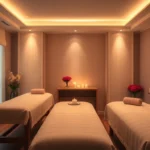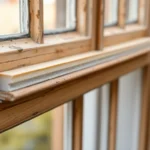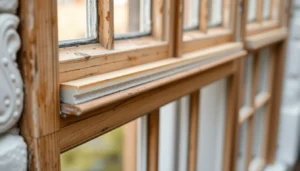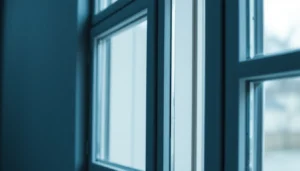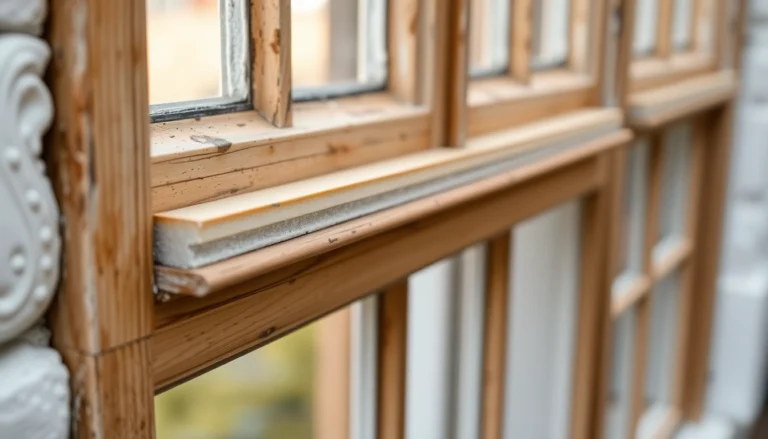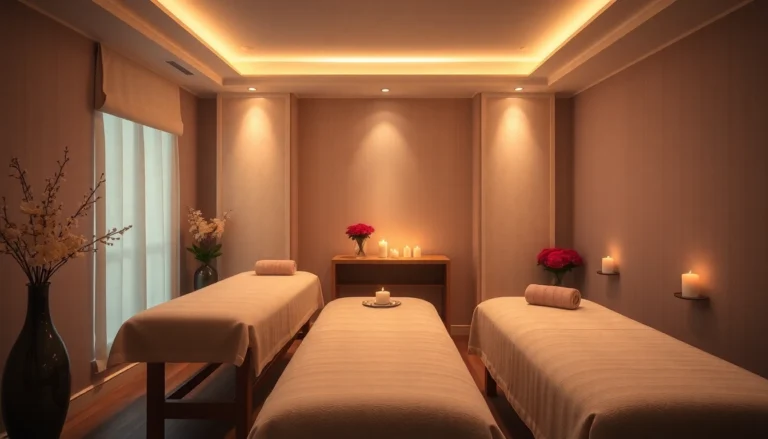Understanding Noise Challenges with Sash Windows
Common Sources of External Noise
External noise pollution has become an increasingly pressing concern for homeowners, especially in urban and suburban environments. Common sources include traffic congestion, public transportation, construction activities, aircraft noise, and bustling streets. In particular, busy main roads adjacent to residential districts can contribute significant decibel levels, often exceeding 70-80 dB during peak hours. Other sources such as nearby factories, nightclubs, or noisy neighbors can also contribute to a persistent and disruptive sound environment.
Understanding where and how these noises infiltrate your living space is essential in designing effective noise mitigation strategies. The architecture of your home, the quality of your windows, and the sealing of gaps all influence how much external noise penetrates indoor spaces. When it comes to traditional sash windows, these issues are often magnified because of their unique design features, which can make soundproofing more challenging.
Why Sash Windows Are Particularly Susceptible
Sash windows are iconic features of classical British architecture, appreciated for their aesthetic appeal and historical significance. However, their design—comprising movable sashes that slide vertically within the frame—presents inherent challenges for sound insulation. The gaps around the sliding sashes, combined with their often slender and lighter construction, create pathways for noise to enter freely.
Unlike modern double-glazed windows, traditional sash windows frequently feature single-pane glass, which offers minimal soundproofing. Additionally, the gaps around the sashes tend to be less effectively sealed, especially if the windows are old or poorly maintained. The wooden frames, while charming, can warp or expand over time, exacerbating the problem by creating larger gaps. Furthermore, the double-hung nature of sash windows often leads to air leaks, making them poor at blocking external sounds.
Impact on Home Comfort and Peace
The intrusion of external noise can significantly diminish the comfort and tranquility of your home environment. Constant noise pollution is associated with stress, sleep disturbances, decreased concentration, and overall diminished quality of life. For residents working from home or seeking restful sleep, noisy sash windows can be a source of frustration and health concerns.
Moreover, inadequately insulated windows can lead to energy inefficiency, increasing heating and cooling costs. Noise penetration often correlates with poor thermal performance due to gaps and unsealed openings, making home comfort a multifaceted issue. Therefore, addressing noise reduction effectively can vastly improve mental well-being, sleep quality, and energy expenses.
Key Methods for Enhancing Noise Reduction in Sash Windows
Secondary Glazing and Acoustic Glass Options
One of the most potent and widely endorsed solutions for noise reduction in sash windows is secondary glazing. This involves installing a new, thick pane of glass—preferably acoustic-grade—on the interior side of your existing sash. Unlike replacing the entire window, secondary glazing preserves the original aesthetic while dramatically improving soundproofing capabilities.
According to industry leaders such as The Soundproof Windows, bespoke soundproof sash windows with certified reductions up to 45dB are available, significantly outperforming standard double glazing. Acoustic glass features laminated layers and special damping properties that absorb and deflect sound waves, making it particularly effective for high-noise environments.
In addition to acoustic glass, triple-glazed units can be employed for maximum noise reduction, offering an extra layer of glass and air space. These options are especially beneficial in areas with persistent, intense noise sources such as flight paths or busy highways.
Sealing Techniques: Draft Proofing and Acoustic Seals
The gaps around sash sashes are prime entry points for external noise. Implementing effective sealing techniques can greatly enhance noise insulation. Draft-proofing using specialized acoustic seals or compression seals is a cost-effective, non-invasive method to eliminate air gaps, thus reducing both drafts and sound transmission.
Compression seals, which are soft, pliable rubber or silicone strips, are installed around the sash or within the frame to create continuous, airtight contact. Unlike traditional brush seals, compression seals provide a tighter, more consistent seal, which is proven to reduce external noise significantly. This method also offers the benefit of enhancing thermal insulation, leading to lowered heating bills.
Sealing gaps in the sash window frame, along with using acoustic door and window seals, can reduce noise levels by up to 70% when combined with other soundproofing methods.
Upgrading Frame and Locking Systems
Modernizing the sash window frame and locking mechanisms can influence both security and soundproofing. Upgrading to thicker, reinforced timber or PVC-U frames enhances the overall mass and resilience of the window, making it less susceptible to vibration and sound transmission.
Improved locking systems also ensure a tighter closure of sashes, which is crucial for preventing gaps that allow noise infiltration. Multi-point locks and advanced locking hardware can compress the sash against the frame, creating a better seal. Installing adjustable sash locks also allows for fine-tuning the fit during installation or after warping over time.
These upgrades, especially when combined with other soundproofing techniques, contribute to a substantial reduction in external noise while enhancing security and energy efficiency.
Choosing the Right Products for Noise Insulation
Comparing Double and Triple-Paned Glazing
Double-paned glazing, composed of two layers of glass separated by an air or gas-filled cavity, offers a significant uplift over single-pane units in terms of noise reduction. They typically provide a reduction of around 20-30dB, depending on thickness, gas fill, and sealing quality.
Triple-paned glazing adds an extra layer, improving sound insulation to up to 40-45dB. This configuration is ideal for properties exposed to exceptionally high noise levels, such as near airports or busy streets. However, triple glazing also increases weight and cost, which must be taken into account during installation.
Choosing between double and triple-pane solutions should involve an assessment of the noise level, budget, and aesthetic considerations. Acoustic-grade panes, laminated layers, and specialized framing enhance performance regardless of pane count.
Custom Acoustic Windows and Bespoke Solutions
For homeowners requiring tailored solutions, bespoke acoustic sash windows are available. These are designed to match the existing architectural style while incorporating advanced soundproofing technologies. Collaborating with manufacturers such as Hugo Carter provides options to reduce noise by up to 45dB, far exceeding the capabilities of standard secondary glazing systems.
Bespoke solutions often include features like laminated glass, high-mass frames, and integrated seals, all custom-engineered for your specific environment. Although they tend to involve higher upfront costs, their long-term benefits in comfort, energy savings, and property value are significant.
Cost Considerations and Return on Investment
Implementing effective noise reduction measures involves initial expenditure, but the long-term benefits often justify the investment. Premium solutions such as triple glazing, custom soundproof sash windows, and professional sealing can cost from several hundred to several thousand pounds, depending on the size and complexity.
However, considering the improvements in home comfort, energy efficiency, and property value, many homeowners achieve a positive return. Quiet, well-insulated homes reduce energy bills, promote better health through improved sleep, and enhance overall quality of life.
Step-by-Step Guide to Implementing Soundproofing Measures
Assessing Your Current Sash Windows
Start by thoroughly evaluating your existing sash windows. Look for gaps, warping, or damage to frames and sashes. Conduct noise tests by recording decibel levels outside and inside at different times to establish baseline data. Identifying specific weaknesses helps tailor the most effective interventions.
Professional vs. DIY Soundproofing Options
While DIY methods such as adding heavy curtains, sealing gaps with weatherstripping, or acoustic films are accessible and budget-friendly, their effectiveness is limited compared to professional installation of secondary glazing or bespoke windows. Experts can customize solutions that address both sound and thermal performance, ensuring optimum results.
For extensive noise issues, professional interventions are recommended, especially when installing acoustic-grade glass or modifying window structures. Conversely, minor improvements like sealing gaps or adding draft excluders are quick, affordable, and can be implemented as interim measures.
Maintenance and Long-term Performance Tips
Maintaining your soundproofing systems ensures lasting performance. Regularly inspect seals for wear and tear, reapply weatherstripping as needed, and clean the glass and framing to avoid deterioration. Upgrading seals as part of periodic maintenance can sustain noise reduction efficacy over years.
In addition, ensuring proper operation of multi-point locks and checking for warping or damage will preserve the integrity of the airtight seal, optimizing noise insulation and energy efficiency.
Measuring Success and Ensuring Lasting Results
Sound Testing and Noise Level Assessments
To objectively gauge the effectiveness of your soundproofing measures, professional sound testing should be conducted post-installation. Noise levels are measured in decibels (dB), with reductions of 20-30dB often considered noticeable, and reductions above 45dB providing near-quiet environments.
Homeowners can also perform simple in-home tests using smartphone apps designed to measure decibel levels, comparing readings before and after improvements.
Customer Testimonials and Case Studies
Many clients have reported transformative experiences after investing in comprehensive soundproofing. For example, a property near a busy arterial road achieved a 35dB reduction following bespoke secondary glazing and sealant upgrades—transforming a noisy, stressful environment into a peaceful sanctuary.
Detailing such cases offers valuable insights into the practical application and real-world benefits of various noise reduction strategies, helping potential clients envision similar outcomes.
Future Trends in Sash Window Soundproofing
Innovations in materials science and urban planning are continually advancing noise mitigation techniques. Future developments include lighter, more effective acoustic glazing, smart sealing technologies that automatically adapt to environmental changes, and integration of active noise-canceling systems into traditional sash window frameworks.
As urban noise levels rise, so will the importance of combining aesthetic preservation with cutting-edge acoustic technology, ensuring residential environments remain peaceful and comfortable.

